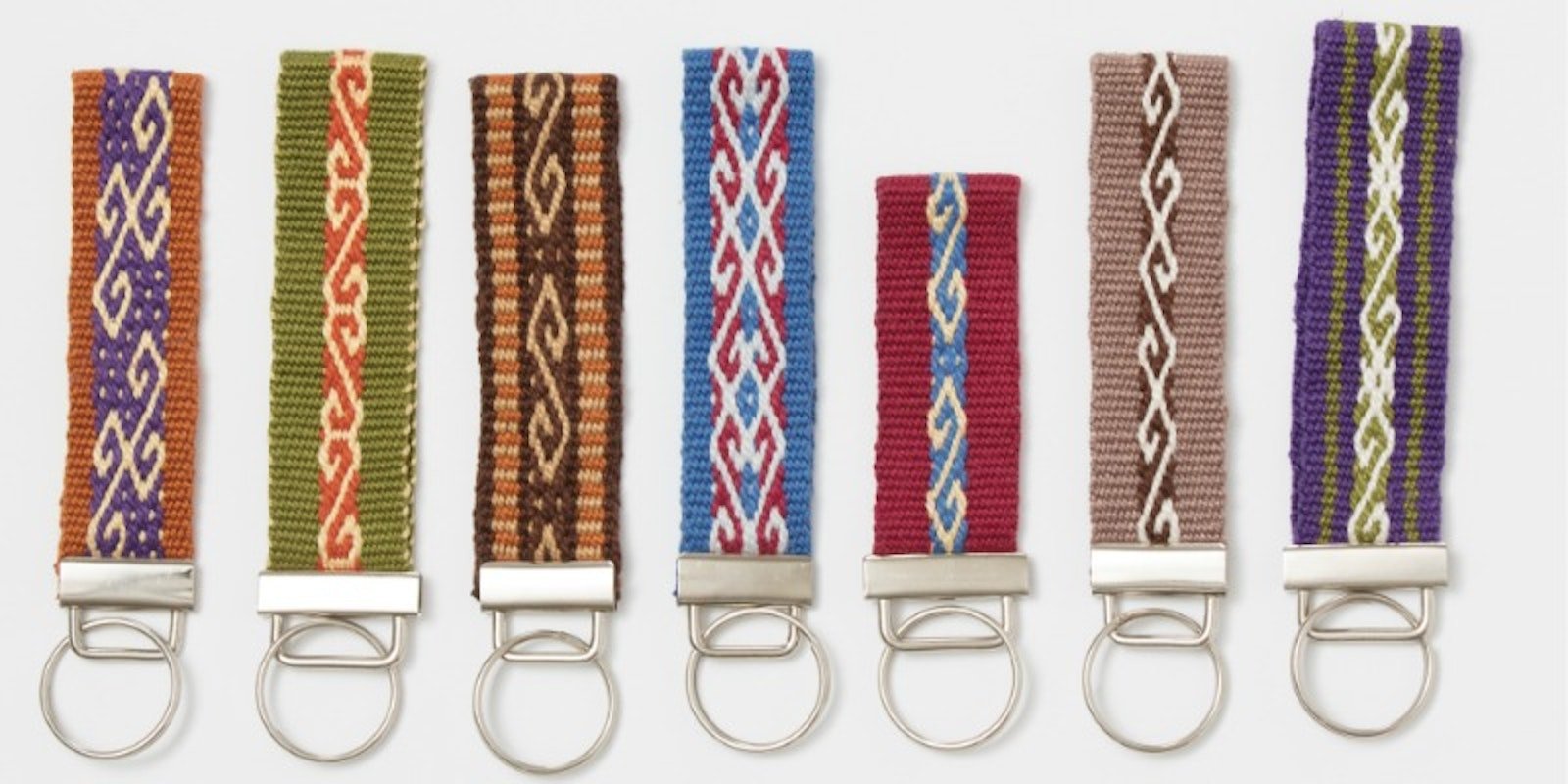Backstrap weaving uses a simple loom but creates simply amazing designs. Though it takes a little patience, the result is worth the work. In her Traditions article for the September/October 2017 issue of _Handwoven, Laverne Waddington writes about her experiences working with Bolivian backstrap weavers. —Christina_
High in the central Bolivian highlands, my weaving teacher, Maxima, sits with three teenagers, guiding them as they take their first steps in weaving. In these small mountain communities, youngsters no longer learn to spin and weave at five and six years of age. Teenagers look to big towns and cities for higher education and work. Because weaving is associated with poverty, many men in the community discourage their wives and daughters from being involved in the craft. These three teenagers have decided that learning to weave is precisely how they want to spend their summer holidays, and I find it wonderful.
Maxima and I met several years ago when I was searching for a weaver to teach me the bandweaving style used in the remote rural communities of the central Bolivian highlands. Last January, I went back up the twisting mountain roads to spend time with Maxima and meet other weavers in the small weaving cooperative that she runs. This time, rather than being a student, I was interested in watching how Maxima and her young students went about learning new patterns.
Maxima calls out the color count, shed by shed. Photo courtesy of Laverne Waddington.
I watch as Maxima weaves a sample and the young women write the pattern instructions down in notebooks, recording the dark and light threads that need to be picked for each shot of weft. She then leaves them to their weaving while she winds a warp to learn a new pattern herself. For this visit, I brought some of my own woven bands to show, and Maxima is keen on copying one of the motifs. Years of experience at the loom means that she can simply examine a band to learn its pattern. She recognizes elements in the new design that she has woven dozens of times in her life: a hook shape, an eye shape, and V-shapes. She sees how these familiar shapes fit together to make a new motif but puzzles over some aspects of it. The end of the hook doesn’t quite curl around in the way with which she is familiar, but bends and then heads off in another direction. She picks up threads, passes the weft, reviews the results, unweaves, and tries again. As she works, she sometimes asks me to call out the count to her as she does with her young students. It is a fun way for me to think about and practice some words in her Quechua language . . . hoq yana, iskay yura (one black, two white).
Weavers in this area do not use stakes in the ground for warping bands. They simply sit, remove a sandal, and extend one leg. The big toe is one warping stake and the index finger the other. The big toe will also be the anchor for the far end of the warp.
—Laverne Waddington
Instructions for weaving these bands on an inkle loom can be found in the September/October 2017 issue of Handwoven and instructions for weaving them on a backstrap loom can be found here.


